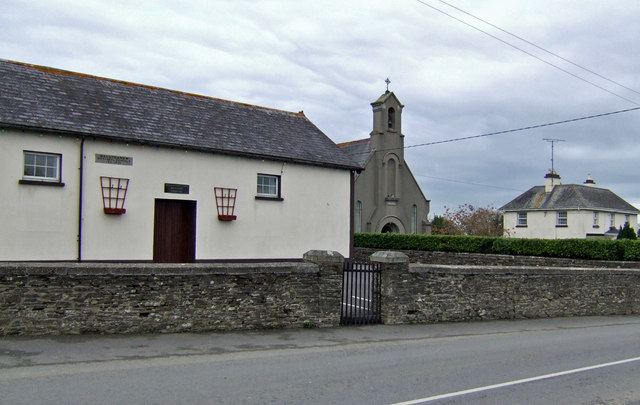Time zone WET (UTC+0) Elevation 60 m | Irish Grid Reference T146524 Local time Wednesday 2:36 AM | |
 | ||
Weather 4°C, Wind SW at 13 km/h, 86% Humidity | ||
Ballycanew (historically Ballyconway, from Irish: Baile Uí Chonnmhaí) is a small rural village in Ireland.
Contents
Map of Ballycanew, Co. Wexford, Ireland
Location
It is situated in County Wexford, on the R741 regional road 8 km (5.0 mi) south of Gorey. This road is widely known as the "Coast road".
Bus
Route 879 serves Ballycanew on Tuesdays, Thursdays and Fridays linking it to Gorey. Bus Éireann route 379 serves Ballycanew on Mondays linking it to Gorey, Kilmuckridge and Wexford.
Rail
The nearest railway station is Gorey railway station on the Rosslare Europort to Dublin line.
Facilities & services
It has a primary school, Saint Enda's National School. There are two churches. St Moling's is part of the Roman Catholic parish of Camolin and St. Mogue's is part of Church of Ireland Parish of Gorey. The village has two shops: a Daybreak and a Londis.
The Ounavarra river, which passes through the village, has a reputation for great fishing.
History
This picturesque village was once known as Ballyconway. An old Irish name for Ballycanew is 'Baile Gan Uaigh' - Town without a grave.
The earliest reference is 1247 when Theodore de Nevel held lands there. In 1821, the population was 1094, but following the great famine it was reduced to 361.
In the past the Furney family owned a mill, built in 1589 and demolished in 1962. The old creamery was once a thriving industry, with an average of 2.5 million imperial gallons (11,000 m3) of milk supplied per annum. 'Papa Rhodes' restaurant is now situated in the old creamery.
In June 1965, a Bronze Age grave was discovered in the Ballycanew Parish. This grave yielded a slightly damaged food vessel and broken human bones. The exact date of the burial is uncertain but is probably more than 3,000 years old.
